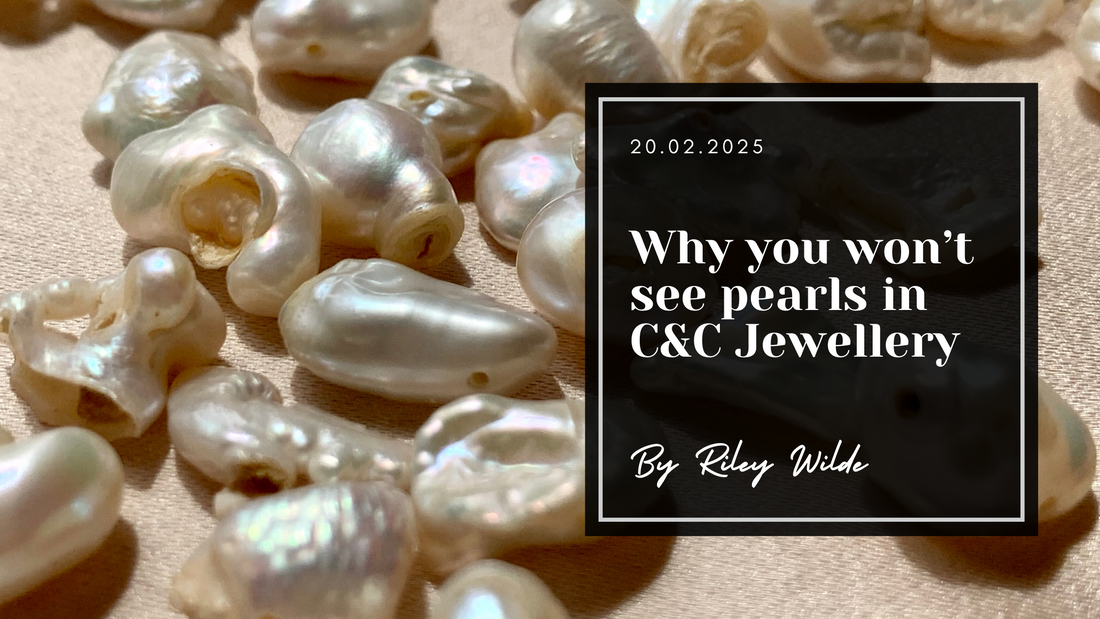
Why You'll Never See Pearls in Campfire & Compass Jewellery
Share
WHAT EVEN ARE PEARLS?
Pearls are made by molluscs, like oysters and mussels, when an irritant gets inside their shell.
The mollusc then coats the irritant in layers of Nacre (the shiny stuff on the inside of shells) so that it's no longer a threat.
You could say that pearls are created by an immune response.

AREN'T PEARLS A NATURAL BY-PRODUCT?
It's true that some molluscs produce pearls naturally, as parasites or foreign particles enter their shell and a pear is made.
Actually this is only about 1 in every 10,000 molluscs and it can take 3 years to produce a pearl.
In order to harvest "natural pearls" a huge quantity of molluscs (normally oysters) are cut open to find and remove them.
This destroys natural mollusc habitats like oyster beds and can kill the animal in the process.

PEARL FARMS
At pearl farms molluscs are bred for the sole purpose of implanting an irritant to create a pearl to be harvested.
They are then forced open to insert the irritant, and then exposed to different water temperatures so that the pearl created is a particular shape and colour.
They are then forced open again to have the pearl removed, in which 2/3 of the molluscs are killed and discarded and 1/3 of them are subjected to the process again.

DOES 1 MOLLUSC = 1 PEARL?
When cultured pearls are produced, often more than one piece of irritant is inserted into the mollusc to force it to produce more than one pearl.
The irritant(s) inserted into the mollusc is often part of a shell from another mollusc, so in fact 2 types of marine life are harvested for the purpose of harvesting pearls.

THE HUMBLE OYSTER
Pearl oysters can live a natural lifespan of 25 years if not for human interference.
It's under debate whether molluscs can feel pain in the same sense that humans do, as they do have nerve endings but no central nervous system.
To me though, it just doesn't make sense to take the risk, and take a life for the sake of a pearl.

PROTECT OUR OCEANS
If cruelty to marine life doesn't put you off pearls, perhaps its impact to the environment will.
Aquafarms pollute the oceans and the practice of harvesting natural oysters for pearls damages oyster beds beyond repair.

WHAT'S THE ALTERNATIVE?
There are loads of alternatives for pearls but unfortunately most synthetic pearls are made from plastics which also pollute our oceans by breaking down into microplastics.
There are some absolutely gorgeous gemstones you could opt for instead, though, like white or peach moonstones! They still have that gorgeous satin-like iridescent shimmer, and they're really affordable too.

SOURCES:
https://www.petaasia.com/news/pearls-cruelty-under-the-sea/
https://www.greenmatters.com/p/why-oysters-make-pearls
https://www.thepearlsource.com/blog/about-freshwater-pearls/freshwater-pearl-farming-the-ins-and-outs/
~ Riley x
